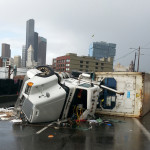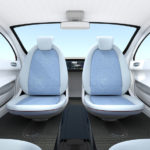The Center for Disease Control and Prevention (CDC) has reported 9,967 fatal accidents in 2014 due to alcohol-impairment, or 31% of all traffic-related deaths in the United States. This also amounts to one fatality every 53 minutes at an annual cost of more than $44 billion.
At greatest risk were younger drivers, ages 21-24 who accounted for 30% of fatal crashes. The next largest groups were ages 25-34 (29%), and ages 35-44 (24%).
Twenty-nine percent of motorcycle fatalities involved alcohol above the legal limit of .08%. The highest percentage of fatalities involved ages 40–49 (40% in 2013).
Drivers involved in fatalities were seven times more likely to have a prior conviction for DWI.
Safety Measures You can Take
- Plan Ahead. Designate a non-drinking driver before drinking.
- Watch out for others. Do not let your friends or family members drive impaired.
- Call a taxi or use other paid transportation if you have been drinking or using drugs.
- When hosting an event, make sure alcohol-free beverages are available, remind guests about designated drivers and make sure your guests leave either sober or with a sober driver.
What are the effects of blood alcohol concentration (BAC)?*
Information below shows the blood alcohol concentration (BAC) level at which the effect usually is first observed, including typical effects and predictable effects on driving.
.02% About 2 alcoholic drinks
- Some loss of judgment
- Relaxation Slight body warmth
- Altered mood
- Decline in visual functions (rapid tracking of a moving target)
- Decline in ability to perform two tasks at the same time (divided attention)
.05% About 3 alcoholic drinks
- Exaggerated behavior
- May have loss of small-muscle control (e.g., focusing your eyes)
- Impaired judgment
- Usually good feeling
- Lowered alertness
- Release of inhibition
- Reduced coordination
- Reduced ability to track moving objects
- Difficulty steering
- Reduced response to emergency driving situations
.08% About 4 alcoholic drinks
- Muscle coordination becomes poor (e.g., balance, speech, vision, reaction time, and hearing)
- Harder to detect danger
- Judgment, self-control, reasoning, and memory are impaired
- Concentration
- Short-term memory loss
- Speed control
- Reduced information processing capability (e.g., signal detection, visual search)
- Impaired perception
.10% About 5 alcoholic drinks
- Clear deterioration of reaction time and control
- Slurred speech, poor coordination, and slowed thinking
- Reduced ability to maintain lane position and brake appropriately
.15% About 7 alcoholic drinks
- Far less muscle control than normal
- Vomiting may occur (unless this level is reached slowly or a person has developed a tolerance for alcohol)
- Major loss of balance
- Substantial impairment in vehicle control, attention to driving task, and in necessary visual and auditory information processing
Blood Alcohol Concentration Measurement
The number of drinks listed below represents the approximate amount of alcohol that a 160-pound man would need to drink in one hour to reach the listed BAC in each category.
A Standard Drink Size in the United States
A standard drink is equal to 14.0 grams (0.6 ounces) of pure alcohol. Generally, this amount of pure alcohol is found in:
- 12-ounces of beer (5% alcohol content)
- 8-ounces of malt liquor (7% alcohol content)
- 5-ounces of wine (12% alcohol content)
- 1.5-ounces or a “shot” of 80-proof (40% alcohol content) distilled spirits or liquor (e.g., gin, rum, vodka, whiskey)
Phillips Law Firm is committed to keeping people safe on our roadways. Please join us in working together to keep intoxicated drivers off the road by sharing this information with your friends and family.
*table credit: https://www.cdc.gov/motorvehiclesafety/impaired_driving/impaired-drv_factsheet.html and adapted from The ABCs of BAC, National Highway Traffic Safety Administration, 2005, and How to Control Your Drinking, WR Miller and RF Munoz, University of New Mexico, 1982.

 Concerns reignite over the dangers of distracted driving as the National Safety Council (NSC) estimates roadway fatalities of 40,200 people in 2016, an alarming increase of 6% over 2015 and 14% increase over 2014.
Concerns reignite over the dangers of distracted driving as the National Safety Council (NSC) estimates roadway fatalities of 40,200 people in 2016, an alarming increase of 6% over 2015 and 14% increase over 2014.
